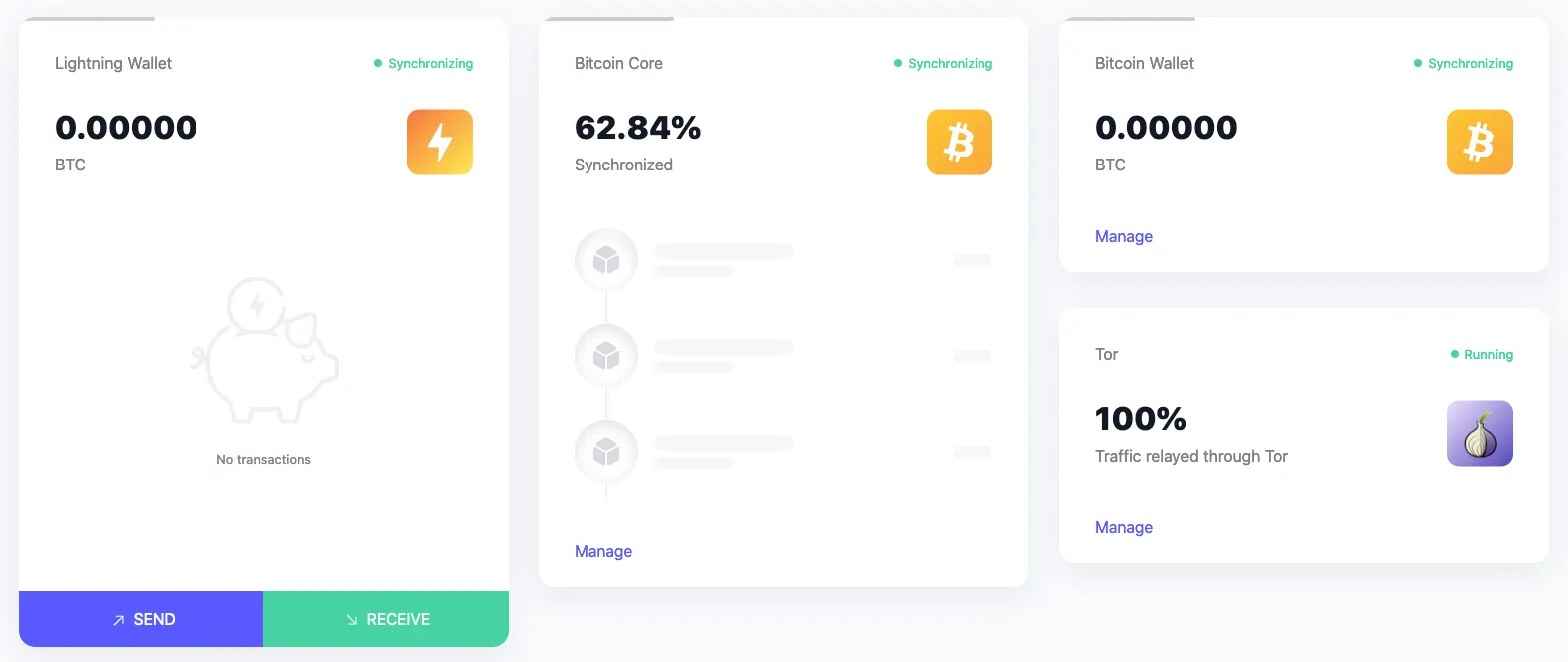In brief
- Running a Bitcoin full node has long been considered a complicated and arduous process.
- With Umbrel, you can start running your own full node in about 10 minutes.
- Because of Umbrel's simple user experience, more and more Bitcoiners are running their own full nodes.
Umbrel is one of the most exciting companies in the Bitcoin space right now because it has solved one of Bitcoin’s biggest stumbling blocks.
Building your own Bitcoin full node has always been an arduous process involving a terrible user experience—especially if you want to do it on a separate piece of kit (in case your hard drive doesn’t have a spare 300 gigabytes of space). Because of this friction, fewer people run nodes and participate in Bitcoin’s ecosystem. But Umbrel is set to change that.

“Bitcoin can not survive if not enough people run their own full nodes,” Umbrel co-founder Mayank Chhabra told Decrypt, adding, “And if you’re betting that in 50 or 100 years down the line Bitcoin becomes a reserve currency, then you’re also betting on the fact that a significantly large portion of users are running their own full nodes.”
The core idea with Umbrel is that you buy the ingredients to piece a Raspberry Pi together—a small computer that costs under $200, including parts—and then use the Umbrel software to load Bitcoin onto it. As Decrypt reported, piecing the kit together is simple and then Umbrel takes care of the rest.
Once up and running, a user is connected to Bitcoin via the Tor network (making it more private for them) and can also access Bitcoin’s second layer scaling solution, the Lightning Network. Beyond that, they can download apps that let them interact more with Lighting, and even run a block explorer that runs on the node’s own data. It’s everything that a basic Bitcoin user needs.
“Setting a Bitcoin node up yourself is pretty time consuming, but with Umbrel, basically you’re up and running in ten minutes,” Umbrel co-founder Luke Childs told Decrypt.
Umbrel is already showing signs of success. Chhabra explained that, while it’s not possible to know how many people have set up Umbrel nodes (they’re hidden via Tor after all), he says that there are likely thousands of them by now.
Chhabra pointed out that Umbrel’s Telegram group has grown to 1,600 members, alongside its 8,000-strong Twitter following. And this exposure has encouraged developers to contribute to the open-source project too.
“There is huge traction on GitHub, we have had over 18 developers who have contributed to our source code in the last six months or so,” he said.
Mainstreaming Bitcoin with Umbrel
Umbrel is trying to make Bitcoiners understand that they aren’t really Bitcoiners unless they run their own full node.
“Wow, this is a bearer asset, I own it, nobody can take it from me or stop me from doing whatever I want to do with it. That’s the mindset we want to get people into,” Chhabra said.
But just because Umbrel is making the process of running a full node easy, doesn’t mean it’s an easy sell. Chhabra said it’s important for Bitcoiners to realise what Bitcoin really is—a decentralized, peer-to-peer alternative to government-backed currency—before they even entertain the idea of running their own node.

“The storyline would be a user gets into Bitcoin, then they learn about how it’s liberating and uncensored, then they take the next step to hold their own private keys, and that’s when they take the next step to run their own node,” Chhabra said.
Right now there are 9700 Bitcoin nodes around the world, according to Bitnodes. But beyond that, secretly running on Tor, there could be thousands more. And Umbrel is making that invisible number grow even faster.

